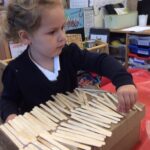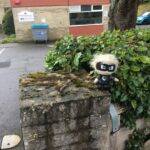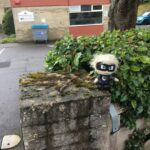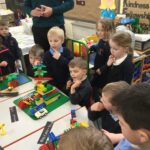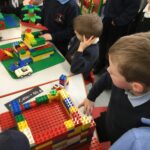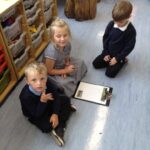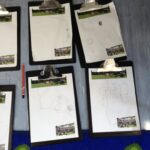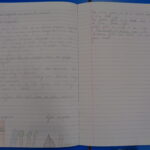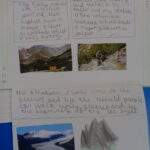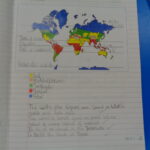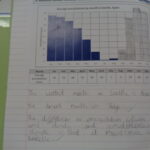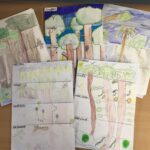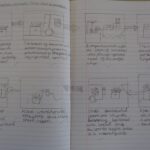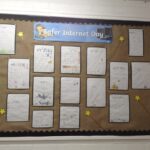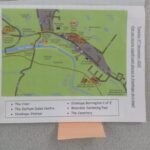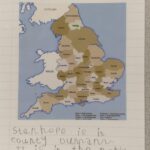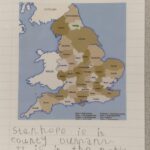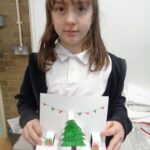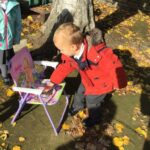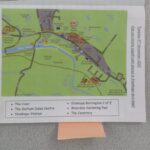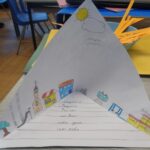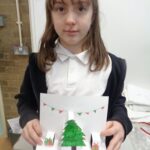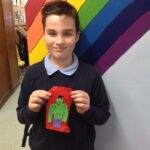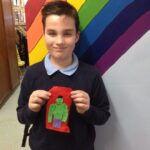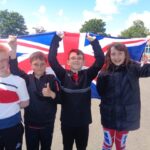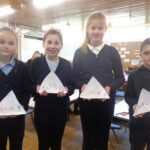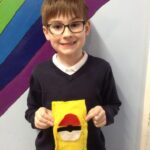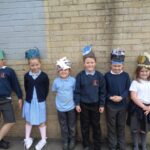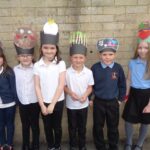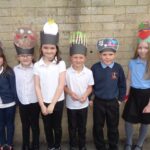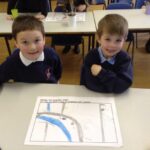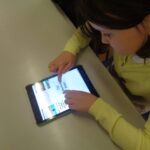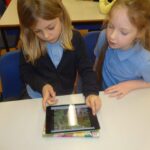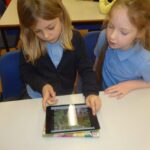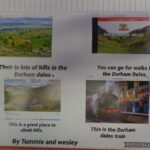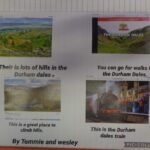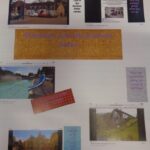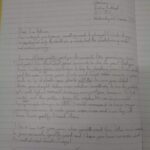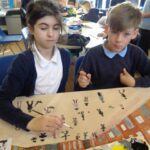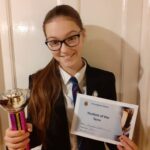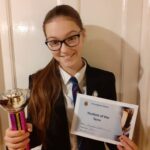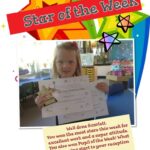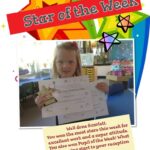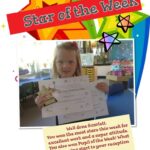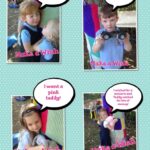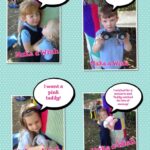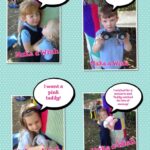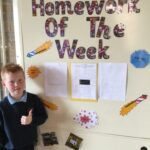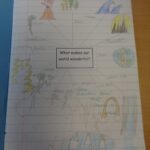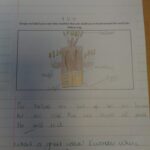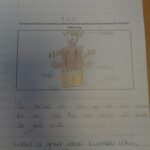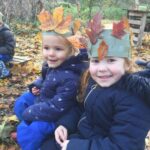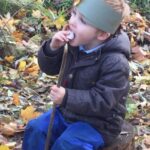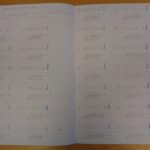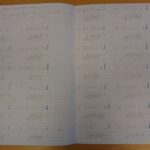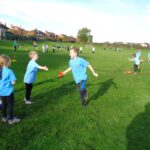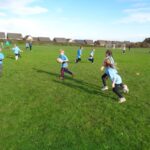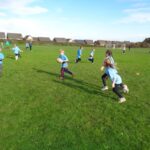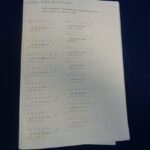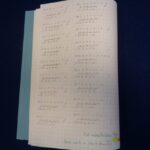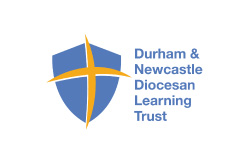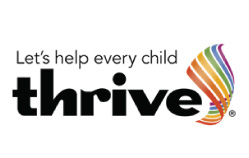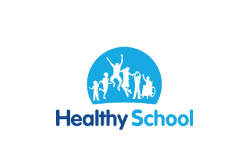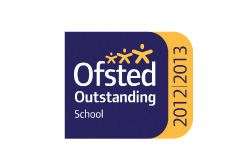Archived Geography 2022-2023
Opal Learning Zone
Where is Miss Independence? – Prior to Stanhope Show the children have been using their knowledge of the local area to plot our route from school to the show field. The children were shocked to find out that Miss Independence had also been on an adventure around the local area. The children were challenged to sort the pictures into the correct order before we set off to find out where she had been. All of the children have a good understanding of their local surroundings, however we must keep a close eye on the sneaky Miss Independence.
Amethyst Learning Zone
Community Landmarks – Over the last few weeks we have been studying our local community and identifying important landmarks. After taking an excursion into the community the children were asked to work collectively to create Stanhope using Lego. The children worked in small groups to make important buildings and then placed them in their correct place on the map.
How can we get to Stanhope Show Field? – After working together to create a school banner for Stanhope Show, the children were tasked with creating a map and verbal instructions of how we could get from school to Stanhope Show field. The children worked in small groups to discuss the route they would take, including drawing their own map. The next day we used our maps to successfully guide us to the show field. Mission accomplished!
Sapphire Learning Zone
What are the differences between hot and cold places? – Our Geography topic this half term, was ‘What are the differences between hot and cold places?’ The children in Sapphire have become increasingly confident when using the atlases to find continents, the equator and the tropics. As part of the topic, we have labelled continents and oceans on a map, located the worlds hot and cold places, looked at key features of both and even packed suitcases for hot and cold places.
Continents and Oceans – Our topic leading up to Christmas is Continents and Oceans. We started by finding out where we are in the world and discussing the places we had been on our holidays, including holidays in the UK. We then had a go at organising vocabulary cards from largest to smallest. These included vocabulary such as country, continent and hemisphere.
Ruby Learning Zone
North America – In the Spring term, Ruby Learning Zone learned about the North American continent. Children looked at different landmarks and discussed whether they were physical (natural) or human (man-made) features. They then learned about the Mount St Helens volcanic eruption and the effect it had on the landscape.
Climate Zones – For our Geography topic in Autumn term, Ruby looked at Earth’s different climate zones. The children learned about how different locations of Earth have different weather patterns and how these are causes by their location on the globe. The children learned about the key lines of latitude, such as the Equator and the Tropics and how these can be used to be identify the potential climates of locations that lie on or near them.
Emerald Learning Zone
Rainforests – We have learned a great deal about Rainforest during our topic. We have used maps to identify where in the world rainforests are and how features such as the equator affect what a rainforest is like. We created booklets to show the different layers of the rainforest and carried out our own research to understand more about the differently layers.
Map Skills – Our Geography topic for the Autumn Term was Map skills. The children have learned about the hemispheres as well as the lines of longitude and latitude and have located them on a map. We have discussed time zones and climate zones to better understand different regions of the world.
Diamond Learning Zone
Where does our food come from? – This half term, the children in Diamond have been finding out about where our food comes from. We looked closely at where different foods originate from and their journey to the UK. We labelled maps using our prior knowledge of map skills to identify and locate the countries which helped us have an idea of where in the world we were sourcing our food.
Map Skills – With an understanding of basic map skills, the children in Diamond used their prior knowledge to extend their learning by focusing on specific areas of the world (France, Uganda, USA and Indonesia). They were able to compare countries with each other by using maps to identify similarities and differences, time zones and describe their location in relation to the tropics, hemispheres and equator.
Archived Geography 2021-2022
Opal Learning Zone
How can you care for penguin eggs? – What an experience! Today we were contacted by Chester Zoo who had a COVID outbreak in the penguin enclosure. The Zoo asked if we could help care for the penguin eggs for a day ensuring we keep them warm just like a penguin does. Initially, we watched a video on how a penguin cares for their egg and the we attempted to do the same. We could say we have a SMASHING time!
Orienteering – We have challenged the children use their locality skills with an Orienteering hunt around the outdoor area. The children had to work together to find a range of images to complete a jigsaw. The children showed fantastic fieldwork skills and also fantastic resilience despite the cold weather.
Amethyst Learning Zone
What is it like to live in Stanhope? – This half-term we have had a deep-dive into our local community as we unpicked Stanhope. Using a range of skills, the children were challenged to use maps to identify key features in our local environment. All of the children showed fantastic progress with their finding skills and we even created a route that we were to follow on our educational walk. After showing a good understanding of the town we ventured onto County Durham and attempted to locate it on a map of the United Kingdom.
Sapphire Learning Zone
Exploring Stanhope – We have been exploring what it like in our local area, Stanhope. We have used maps, keys and Atlases to help us look closely at where Stanhope is in the UK, the North East and then looked closely at Stanhope itself. We have thought carefully about the wonderful things we have in Stanhope and even created our own leaflets all about Stanhope and its hidden gems!
Ruby Learning Zone
What is the United Kingdom? – For our Geography topic we focused on the United Kingdom: learning about the different countries that make it up and using maps to find cities and other landmarks. We also learned about the different sizes of settlement, such as towns and villages and applied this knowledge to our local setting.
Emerald Learning Zone
Where are the worlds volcanoes? – In Geography we have been learning about Volcanoes from all over the world. We studied how they are formed, what happens during an eruption and where the most volatile volcanoes can be found. We completed our topic by erupting our very own volcano.
Seas and Oceans – We have been learning about the seas and oceans that surround us in Geography. The children practice skills using maps and atlases to locate oceans. We have also studied tidal management techniques and the environmental impacts on building hotels in costal areas.
Diamond Learning Zone
Earthquakes – In Diamond, the children thoroughly enjoyed their topic on earthquakes. We focused on the major earthquakes such as: Nepal 2015, Indian Ocean 2004, Japan 2011 and they all wrote a fantastic report on Haiti 2010! We looked at why and when earthquakes happen as well as the destruction and devastation caused both to people and places. At the end of our learning, the children role played what they would do in case of an earthquake and quickly hid under desks when the sirens went off!
Population – In geography, the children in the Diamond Learning Zone have been looking at the UK and how the population has changed over the past 50 years. We researched and read a variety of information sources and graphs to find out why the population has changed and record this in our books.
Archived Geography 2020-2021
Opal Learning Zone
New Life – What better way to develop our geographical knowledge than an educational visit into Stanhope? To coincide with our New Life Topic, the children ventured to the Durham Dales Centre where we searched for tadpoles. It was fantastic to explore our local community and see some superb scenery. Unfortunately, our tadpole hunt drew a blank but we did see numerous minibeasts as we explored the wonderful area.
Amethyst Learning Zone
Plotting our Route – At Stanhope Barrington we are surrounded by amazing natural beauty, and it was fantastic for the children to go on an educational walk searching for tadpoles. Prior to our walk, the children were provided with an aerial view of Stanhope. Using the maps, the children had to identify how we could navigate to the Durham Dales centre and which paths we would use. The children were fantastic at recognising key points of interest in Stanhope.
Sapphire Learning Zone
Ruby Learning Zone
Emerald Learning Zone
Diamond Learning Zone
September 2020- February 2021
Class 1
What is it like where we live (Stanhope)? – While we have not been able to explore the local area in person, we have used the internet and photographs to find out about where we live. The children have developed their map-making skills, using symbols and keys to draw maps of the school and Stanhope itself.
Class 2
The Durham Dales – In Geography we have been looking closely at the Durham Dales. We have used maps and atlases to locate the Durham Dales and the surrounding towns and cities. We have made posters, using ICT, to promote the amazing things you can do in the Dales.
Class 3
Class 4
‘What’s underneath my feet?’ – In Geography this half term, we have been exploring the topic ‘What’s underneath my feet?’ We started by looking at the continents and oceans that make up the world, next we zoomed into Europe, then the UK and finally Weardale. We compared Weardale with Newcastle upon Tyne and the looked at our local river, the River Wear. In our final lesson, we labelled the features of rivers, here are some examples we put on display.
Class 5
Farming in the UK – This half term in Geography, we have been focussing on how different crops are grown in the UK. The children looked at how climate change affects both arable and pastoral farming. The children wrote a letter to a local farmer to inform them of ways in which they can adapt their strategies and techniques. They came up with some great ideas and used excellent geographical language.
Policy: Geography Policy ; History Policy
Staff Co-ordinator: Mrs. C. Stidwell
Link Governor: Mrs. A. Johnson
Statement of Intent:
Class 1
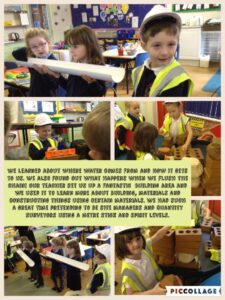
27.10.19- In Geography we have been learning about our local area. We found out that Stanhope has different types of houses. We looked at the different houses in our area and found that we have detached houses, semi-detached houses and terraced houses. We then used our bodies to make some of the houses. It was a really fun way of learning the posh names for different houses.
Class 2
In Geography, during Spring half term, we have been investigating the Equator and the counties that are near it. We have looked at the different temperatures around the world and have visited a range of countries. We have been to both the poles and answered the question, ‘Why do penguins and polar bears never meet?’ The children have looked at where they would like to go in the world and used ICT to find out key things of interest. We have some avid explorers in the making!
In History this half term we have been looking at our local landmarks. We have been using I pads to place landmarks within the North East into chronological order. We have then sketched and researched our chosen one.
Finally, we have designed our own landmark; thinking carefully about its design and what it might have been used for previously.
In Geography, we have been finding out what makes the world WONDERFUL. We have looked at images of some of the wonders of the world and created our own artwork and posters to showcase them.
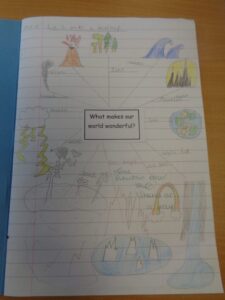
In Geography, we have looked at the different continents, focused in detail upon one and looked at capital cities and landmarks within them. The children have developed their use of an Atlas and Globe and are excited to explore different places around the world through the use of Google maps and You tube. We feel like we have actually visited some of the amazing wonders of the world.
Class 3
20.01.20- In History, the children worked in groups to study Ancient Egyptian artefacts and group them based on their appearance. Each child then used inference skills to guess what a mysterious artefact could be and how it could have been used.
2.12.19- In Geography we have been looking closely at a map of the UK. We worked in groups to identify hills, mountains and rivers. Each team was able to find and locate them correctly.
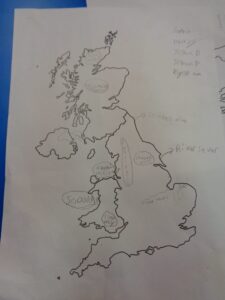
25.10.19- Over the past half term, Class 3 have had lots of fun learning about WW2. All of the children created some fantastic pieces of work which contributed to our lovely class display.
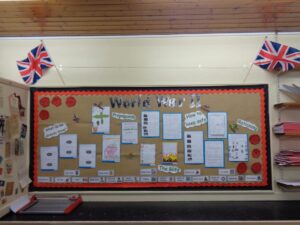
23.09.19- In History, Class 3 have been learning about the Blitz and what it was like to be a child at this time. Euan created a fantastic piece of writing that included important key words and an excellent picture of him standing at his bedroom window whilst the Germans dropped bombs on the city.
Humanities – Class 3 – The Blitz- 2019
Class 4
Flood Resilience Week – During Flood Resilience Week, Class 4 worked with The Environment Agency to learn about flooding, our local landscape and climate change.
We had a session on emergency planning to make sure we all know how to respond in a flood emergency and what to pack in a ‘grab bag’.
We compared and contrasted a rural and urban area to see how flooding differs in different geographical areas. Finally we learnt about pollution in our local river – The River Wear and what we can do to help and support our river system.
Anna Caygill from the Environment Agency taught us about the natural flood defences currently being trialled in Weardale.
It was a really interesting week and the children all learnt a lot about their local environment.
In History our theme this term is “All about Tudors”. The children have enjoyed learning and organising specific events in Tudor times which led to discussions about the important of the Tudor Rose. In subsequent lessons, the children have enjoyed learning about general Tudor life, this includes, Henry VIII and his 6 wives, Tudor houses, rich and poor living and they specifically enjoyed creating an archaic style Tudor menu for King Henry VIII banquet.
Class 5
Viking Artefacts-In our last lesson on the Vikings, we used the ‘Mantle of the Expert’ concept to bring together everything the children have learnt during this topic. The children were tasked to develop captions which a curator could use for the Viking artefacts in his display at the local art gallery. The visitors were coming from Sweden and Norway and therefore it was imperative that the captions were accurate and appropriate and did not perpetuate the myth of ‘vicious Vikings’.
The children rotated around the art gallery in pairs, discussing and agreeing the wording they could use for each artefact.
The quality of the discussions demonstrated how much the children have learnt.
Zoo Lab visits Class 5- On the 29th January we had the fantastic Zoo Lab! As we went into the hall, Rob, our Zoo Lab instructor, introduced himself and said that he had been coming here for 9 years! The first animal Rob told us about was large, slimy and had a surprisingly large amount of teeth which are apparently sharper than shark’s or tiger’s teeth: it was a snail. Rob said that it was a Giant African Snail with 10,000 teeth – I was blown away by that fact! I did hold it although it wasn’t as slimy as you would think, plus snail slime is an ingredient in face cream!
Secondly, Rob brought out an insect that has been around the planet for millions of years and if you froze it for 2-5years it would still be alive once it was thawed out. It was a cockroach. I also held this one and I won’t lie, it was almost satisfying when it crawled in my hand!
After that, Rob brought out a tarantula which we weren’t allowed to hold because if you touched its hair you would get incredibly itchy. The next one was my favourite: a snake. The snake – fortunately- wasn’t venomous, it was a constrictor which means it basically strangles you. I held this one and loved the feel of it. Finally, we had an adorable rat who climbed on Rob’s back and then climbed back in its cage. Its fur was so soft. Unfortunately, we weren’t allowed to hold it in case it ran off.
I really did enjoy Zoo Lab this year.
By Alice (Aged 11)
Vikings-
Flood Resilience Week – The week commencing Monday 11th November 2019 our school held a Geography Week with the theme of Flood Resilience. Our class spent two whole days working with a range of visitors ranging from the Environment Agency to Northumbria Water.
We learnt what flooding is and how it is caused, we learnt about the impact climate change is having on flooding and what the risks of flooding are in Stanhope.
We all made an emergency plan and learnt how to help our neighbours during a flood. The best bit of the week was when we went on a walk down to the river and learnt about the flood defence systems which have been put in place to protect the residents and homes in Stanhope.
We used our comparing and contrasting skills to look at flooding in Sunderland and Stanhope and identified what the challenges were in each area. We explored hard and soft engineering options for flood defences and learnt about the natural defence pilot currently taking part in our area of the world.
Finally, we became news reporters and put together a news report to give people advice and guidance for what to do during a flood emergency – it was really good fun!
The Flood Resilience Week rounded off our geography topic on Raging Rivers and helped us to apply what we had learnt in action.
Raging Rivers- In Geography this half term Class 5 have been learning about rivers. We began by learning about the water cycle and where our water comes from and how it reaches our rivers. We have used atlases to research rivers in the UK and around the World. We then moved on to learn about the key features of a river and have learnt about erosion and deposition.
This topic will take us on to learn about flooding and we are really looking forward to our Geography week when we will be working with The Environment Agency, Northumbria Water & Wear River Trust to learn about Flood Resilience. We are also hoping to go on a field trip to see some of the natural flood defences in action!

